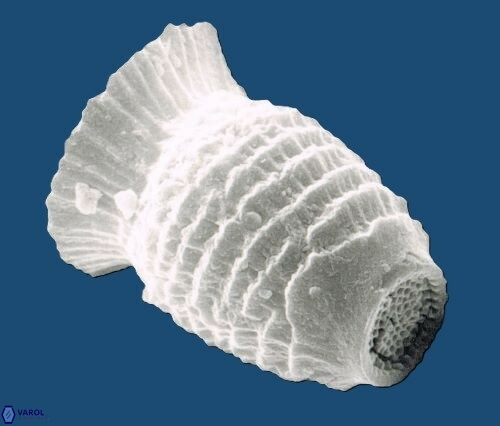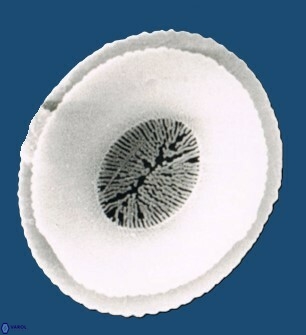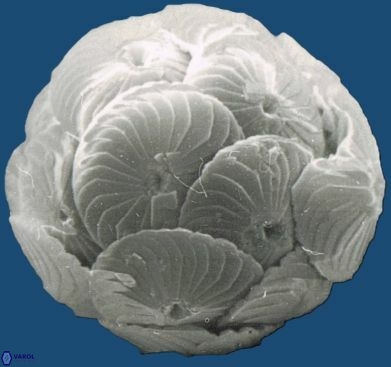Nannofossils
Calcareous nannofossils
Calcareous Nannofossils [referring fossils] include the calcite-secreting microscopic planktonic algae [coccolithophores] and certain forms [nannoliths: Discoasters, Schizosphaerellids, Pithonellids etc.] commonly associated with them, which may or may not be related. The calcareous nannoplankton or Coccolithophores [referring to living organisms] are marines, unicellular flagellate phytoplankton (a single-celled organism), belonging to the Domain Eukaryota, Kingdom Protista, Phylum/Division Haptophyta and Class Coccolithophyceae [only calcifying forms with organic body scale and having two equal flagella are retained in Class Coccolithophyceae. Haptonema can coil].
The informal title nannoplankton [Greek nano, nanno - the UK and USA English spelling respectively, dwarf] was introduced by Lohmann (1909) for planktons less than 65.0µm.
The term Coccoliths was introduced by Huxley (1858), first observed in marine sediments.

Life Cycles
Coccolithophores turn diploid and haploid phases, called dimorphic life stages. Coccolithophores can reproduce asexually during mitosis; one diploid cell divides to create two genetically identical diploid cells. Coccolithophores can also reproduce asexually through meiosis; in two steps, one diploid cell divides to produce four daughter haploid cells with only one copy of each chromosome (haploid). Later in their lives, in the haploid stage, coccolithophores may reproduce sexually by fertilisation; the two haploid cells will join to create a diploid cell again with two copies of each chromosome [need to be confirmed].
The non-motile diploid life-cycle phase produces heterococcoliths of radially and complexly organised segments. The motile haploid life-cycle phase has holococcoliths composed of often less than < 0.1 µm rhombohedral crystal or hexagonal prism.

Brief Geological History of Nannofossils
Nannofossils first appeared in the Late Triassic, apparently confined to low latitudes. They flourished in all marine environments during the Jurassic and Cretaceous and attained their maximum diversity peak during the Late Cretaceous. Nannofossils had a mass extinction at the Cretaceous/Tertiary boundary when over 90% of species became extinct. During the Early Paleocene, nannofossils re-established rapidly and reached another maximum peak in the Lower Eocene, especially at Zone NP12. Nannofossil diversity drastically reduced during the Oligocene but flourished again during the Miocene to Pliocene., followed by a significant reduction in diversity during the Pleistocene.
